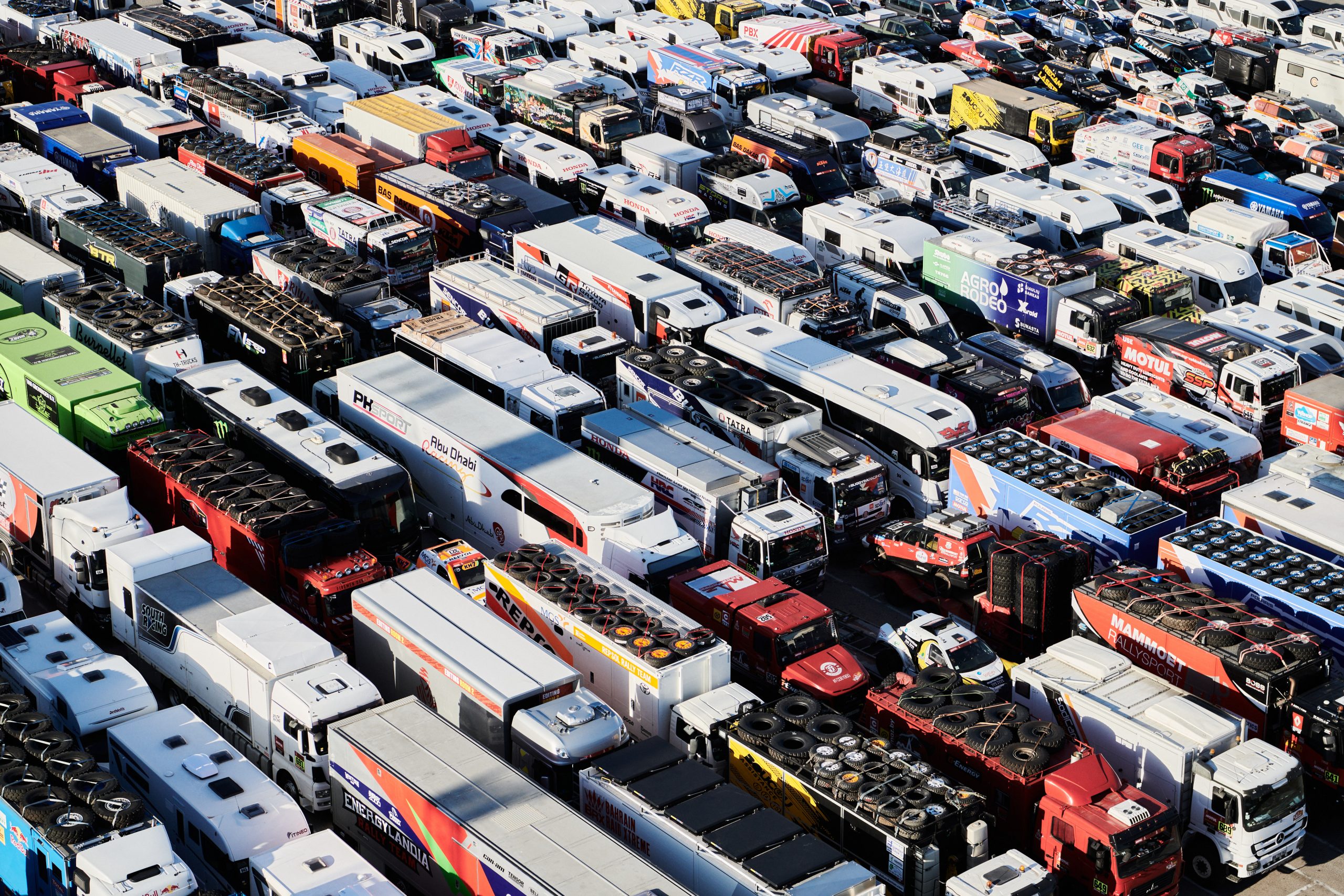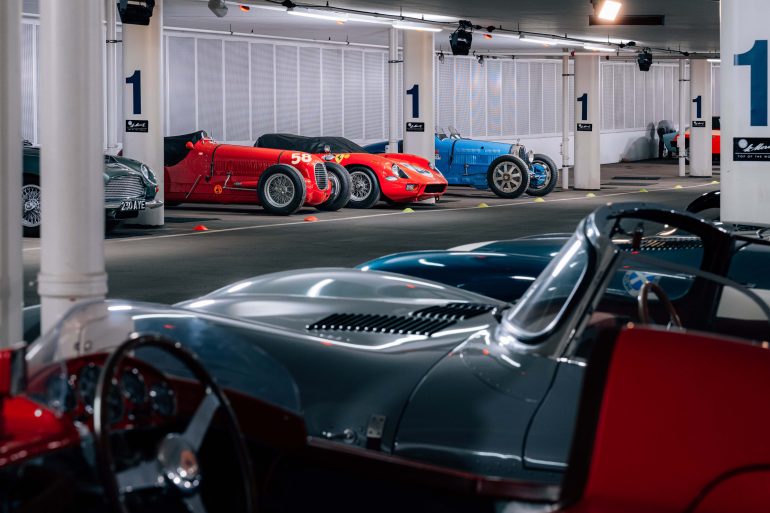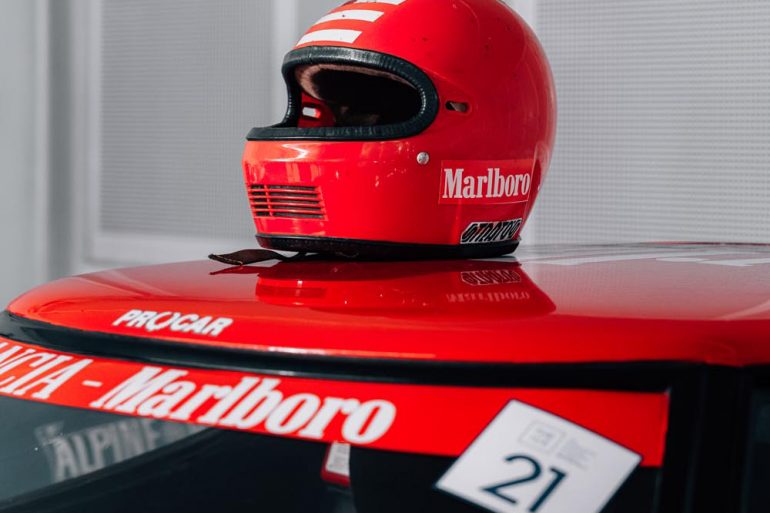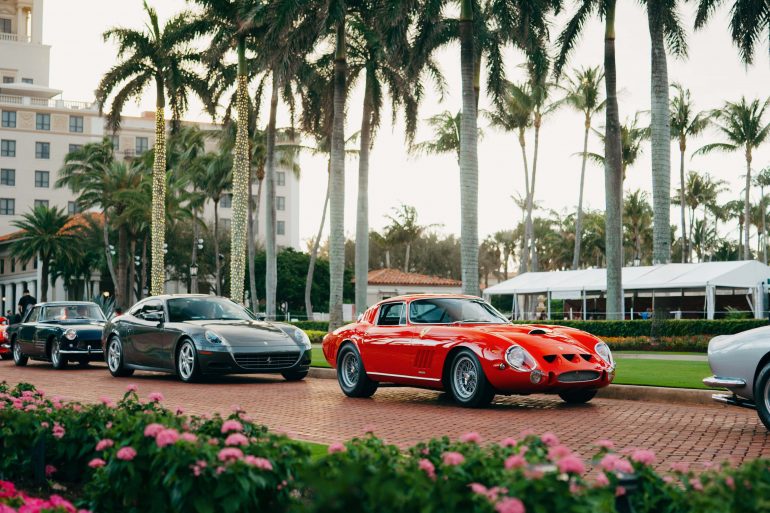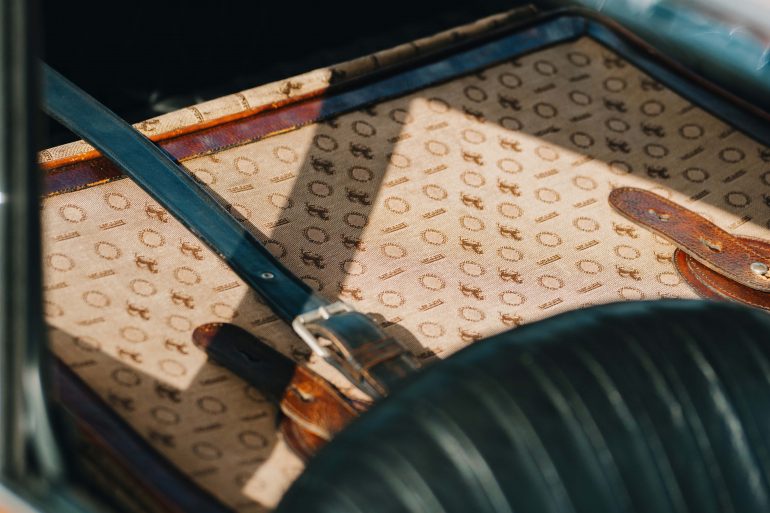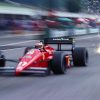Despite being one of the first motorsport events of the calendar year, for many, the Dakar Rally is an highlight of the motor racing season. If you’re hoping to watch the 2021 event live, the race itself has already been and gone. Yes, the 43rd edition of the race took place in Saudi Arabia from 3rd to 15 January 2021. However, with this year’s Covid restrictions, photographer Nicolas Prado found himself with a unique opportunity to document a logistical phase of the race preparation, resulting in the following series of images.
If you have heard of the rally, but you are not entirely sure how it works, here is a quick introduction for you. Set over 14 days, different vehicles classes race across stage distances and surfaces, totalling close to 8,000 km. The five most recognised categories are; Trucks, Bikes, Quads, Prototypes, and Classics. These machines have to be robust enough to withstand rough terrain, durable enough to complete vast distances and be safe enough to withstand any possible crashes at high speed. It’s important to note that these stages cover natural habitats – there is little in the way of run-off areas and safety barriers. Routes are provided the night before each stage, making every day a unique adventure as drivers and co-drivers race their way across dunes, deserts, mountains and rivers, trying to get to the next checkpoint in the fastest possible time. Breakdowns, getting lost, and crashes are inevitable, which adds to the elapsed time. But as most competitors will come across some form of problem, the mindset is to keep going, making Dakar one of the most unpredictable races in the world.
So that’s the format, but before the race can begin, teams from around the world must transport their equipment to the start line. In a typical year, entrants from Europe and Russia congregate in the south of France for two pre-race events. The first is a parade for fans at Circuit du Castellet, allowing the public to see the vehicles up close. It’s a relaxed event with a pre-race party atmosphere. Then things start to get more serious with the logistical task of loading all equipment and cargo onto a ship before setting off to the race destination. Typically, entries from regions, including Japan and South America, arrive via alternative methods and routes.

This year, Covid 19 prevented the pre-event from going ahead, leaving the Port of Marseille as the only opportunity to view everything together before the starting line in Saudi Arabia. Even before the pandemic, this loading exercise was never a public event, but this year’s access was so limited that Nicolas was the only photographer granted photographic permission. So, over three chillingly cold December days, Nicolas was onsite documenting the meticulous process of weighing, checking in and loading onto the cargo ship.
The operation I attended was pure logistics. There were no journalists or photographers – apart from me – and I only made it because I was working for the logistics company, not press. I’ve never seen restrictions like it. The weather was super cold, and the wind even worse.
Nicolas Prado
The scale of the operation was enormous, with a team of 30 staff managing the project. The inventory included an array of heavy-duty items and vehicles, including ten helicopters, 140 motorbikes, 600 vehicles and 20 shipping containers.

“I was surprised by the numbers of vehicles. From the bikes to the buggies – everything was being loaded. I didn’t expect to see the support cars or helicopters. It was surreal seeing them in raw form. From the straps tying them to wooden pallets to the high tech bikes protected by bubble wrap”.
Nicolas Prado

Witnessing this first hand was a rare opportunity for a motorsport enthusiast photographer, and Nicolas made the most of it. “I shot for three days. 2 days for the registration of all teams and vehicles — one day for loading the boat. The first two days went by so fast as it was such a busy schedule. The last day for boarding was more complicated as the access had even greater restrictions. I must give a special shout out to the individuals on-site as they were super nice: It was fantastic to meet the docking team – they were so welcoming – it felt like they were a family. Unbelievably they let me get in the giant crane with them – I couldn’t believe my luck!”
Once the ship was loaded, that was the end of the shoot. Nicolas tells us, ‘I just wanted to get on the boat and document the race itself! Maybe next year!’. After leaving port, the kit went on a three-week journey at sea before arriving in Jeddah.

